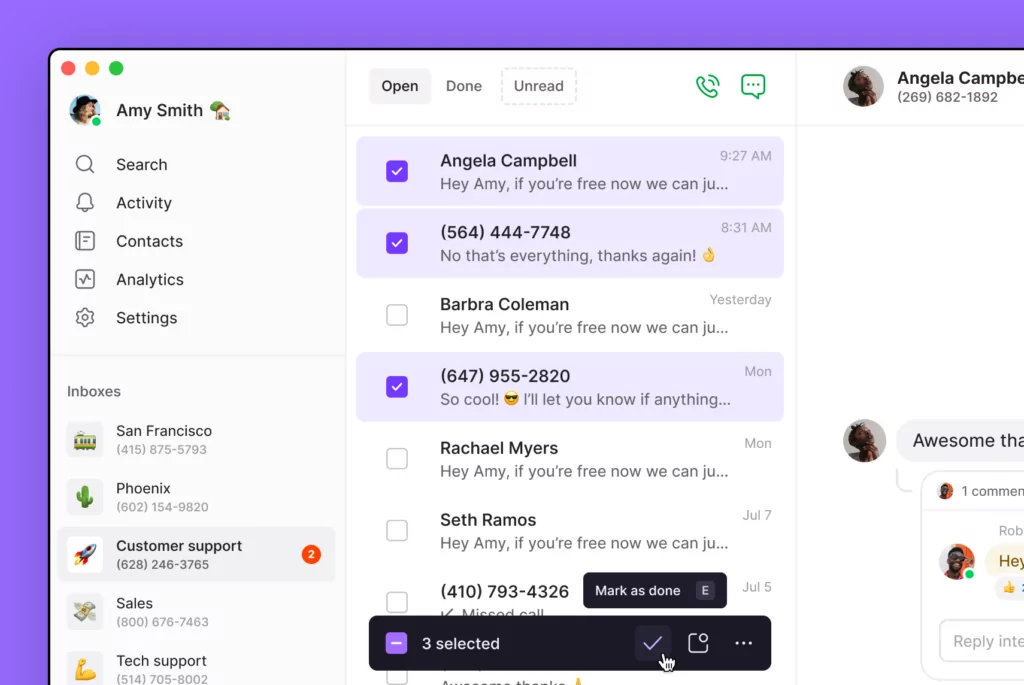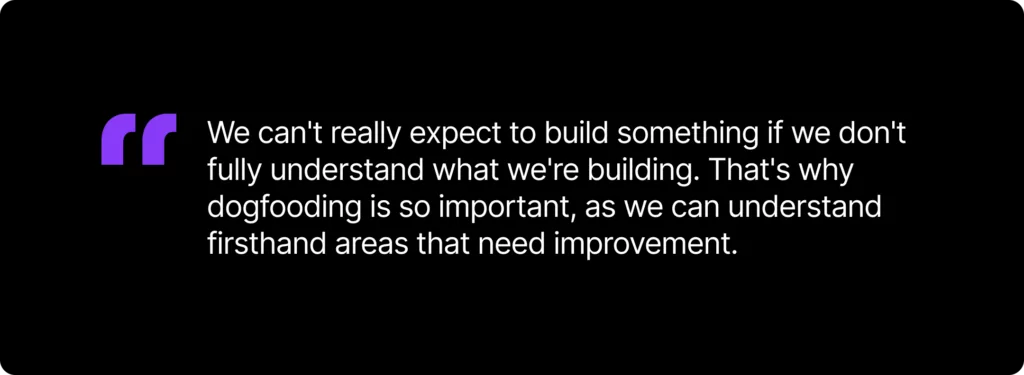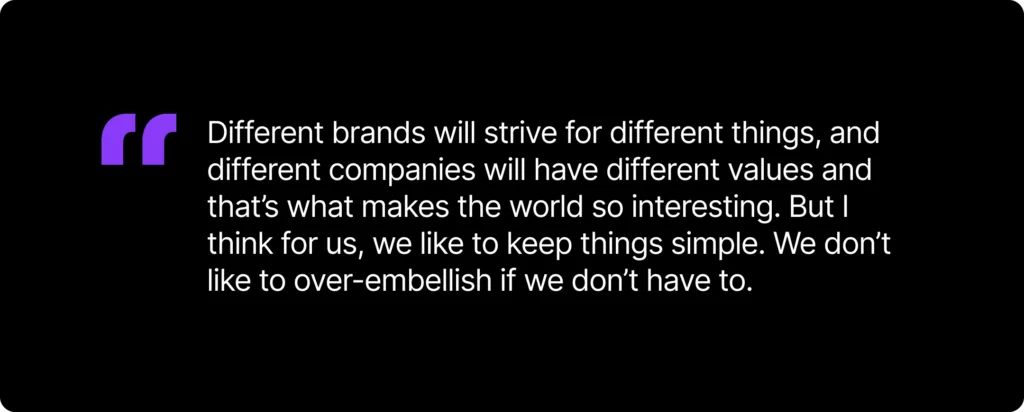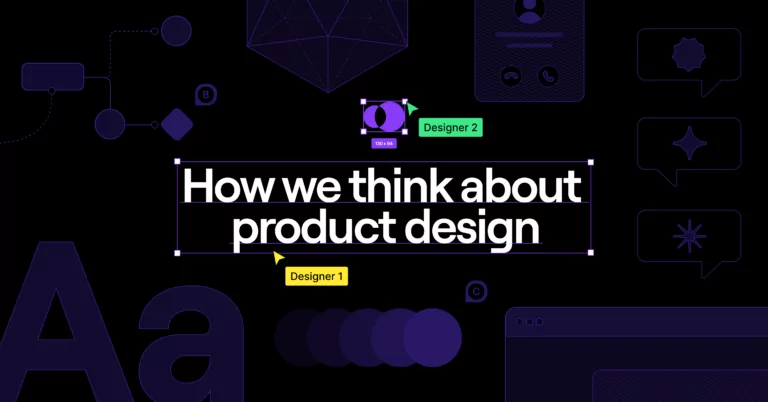Designing a product goes beyond just the visuals. It’s about shaping an experience that resonates with users on a deeper level. At OpenPhone, our designers balance the impact of good aesthetics with the practicality and importance of user experience, making sure to embed this thinking into our design philosophy.
As OpenPhone’s Head of Design, I’d like to offer you a closer look at how this approach is reflected in OpenPhone’s development, highlighting our constant commitment to prioritize our customers and their needs.
If you’ve always been curious about how to create solutions that are both visually appealing and intuitively functional, read on.
Understanding our design ethos
Our design ethos is built on three fundamental principles, all centered around enhancing the end user’s experience:
- Functionality as a foundation: We believe that true functionality naturally leads to good design. Our focus is on clarity and ease of use, avoiding the common pitfalls of ‘bad design’ that often result from confusing or difficult user experiences.
- Design with conviction and opinion: Every aspect of our app is a result of deliberate, thoughtful choices aligned with a clear vision for the product. We want an app that not only functions well but also resonates with the varied experiences, needs, and backgrounds of our users while staying true to our brand’s identity and values.
- Simplicity: We always aim to simply features and elements to their core, essential forms. Our customers have a wide range of technical aptitude, so we want to implement the most straightforward and effective solutions.
Our approach to cohesion, detail, and simplicity
Within our design process, meticulous attention to detail and simplicity are paramount, especially as we aim for a cohesive user experience. For each feature we design — no matter how small — we consider its holistic impact on the product. This approach ensures a seamless user experience, avoiding the disjointed feel that can arise in more complex products.
Regarding following product trends, look beyond the negative connotations often associated with them. Jakob’s Law offers a scientific perspective here: users spend more time with a variety of platforms than with any single product. Their cumulative experience shapes their expectations. Therefore, aligning with familiar patterns seen in other products can prevent a disjointed experience, to make sure there’s consistency and familiarity across different platforms.

For example: The use of radio buttons in UI design. These small circular buttons, allowing the selection of one option among several, represent a UI trend that has endured across generations. Because of their widespread and long-standing use, users have come to expect this pattern.
Introducing a radically different design for the same functionality could potentially disorient users, as it deviates from their established expectations. This example underscores the essence and importance of following trends that enhance user familiarity and comfort.
Iterating and evolving through user feedback
We pay a lot of attention to user feedback, which plays an important role in shaping our design decisions. Here are the different channels we gather feedback from:
- Customer support: Our Support team is instrumental in identifying user pain points. This can range from technical bugs and design flaws, to broader user experience issues and new feature requests. Being able to collaborate closely with them helps us refine our product continuously.
- Social media: Conversations on different social media platforms offer insights into how our app is perceived and used in everyday life. These discussions often provide a wider perspective to help with ongoing development.
- Proactive research: We actively engage in user testing, along with conducting interviews with both current users and those of competing products. This gives us an understanding of the general pain points and industry trends.
- Internal dogfooding: Our team regularly uses our product, mirroring the customer experience. This internal use helps us find potential issues proactively, and often before they affect our wider user base.

Looking ahead
As we look to the future, there are three key themes that we’re particularly excited about.
First is our focus on enhancing collaboration. We want to continue to develop features that build better teamwork and communication, especially as the complexity of our customers’ needs increase.
This leads to our second theme, configurability. We want to make our product more adaptable, and allow for more custom workflows that align with the evolving requirements of our users.
The third area, and perhaps the most dynamic, is our dive into Artificial intelligence. AI is a trending topic, and rightly so. We’ve already introduced AI-based features into our product, which have become some of our most popular offerings.
Our belief is that AI, when implemented thoughtfully, can significantly enhance the user experience. It’s not just about adding value; it’s about saving time and reducing effort for our users. But, our approach is cautious and deliberate. We’re focused on bringing in AI in ways that genuinely improve our product, avoiding the trap of using AI merely as a trendy feature.

Advice for aspiring designers
One fundamental truth in design is the importance of communication. You need to be able to tell a story. Whether you’re in a startup or a big agency, the real art lies in expressing your ideas clearly and effectively. What’s equally as important is understanding your audience. In the world of design, particularly product design, you should think from the perspective of the user. Learn to immerse yourself in their experiences, and their challenges. It’s this empathy that will shape your design principles and make sure your work truly resonates with the end users.
The best designers are those who remain perpetually curious. They have this relentless hunger to explore and understand more. This curiosity is your strongest asset. Use it. Grow it. It will lead you to unexpected discoveries and insights. A few other lessons that I’ve learned along the way:
- Visually stunning yet hard-to-navigate designs, or highly functional but visually unappealing ones, miss the mark.
- Alway aim for that sweet spot where form and function coexist.
- Draw your inspiration from the world around you. Real-world designs offer the best lessons in problem-solving.
One last thing, strive for perfection but know it’s a journey with no end. The beauty of design is that there’s this continuous evolution, this constant striving for the better. Lean into that.
Join our design team
As we continue to innovate and redefine our design approach, there are many exciting developments on the horizon at OpenPhone. In line with this, we’re thrilled to announce that we’re expanding our team and are currently hiring Product Designers. If this piece has sparked your interest and you find yourself aligned with our approach to design, we encourage you to apply.

